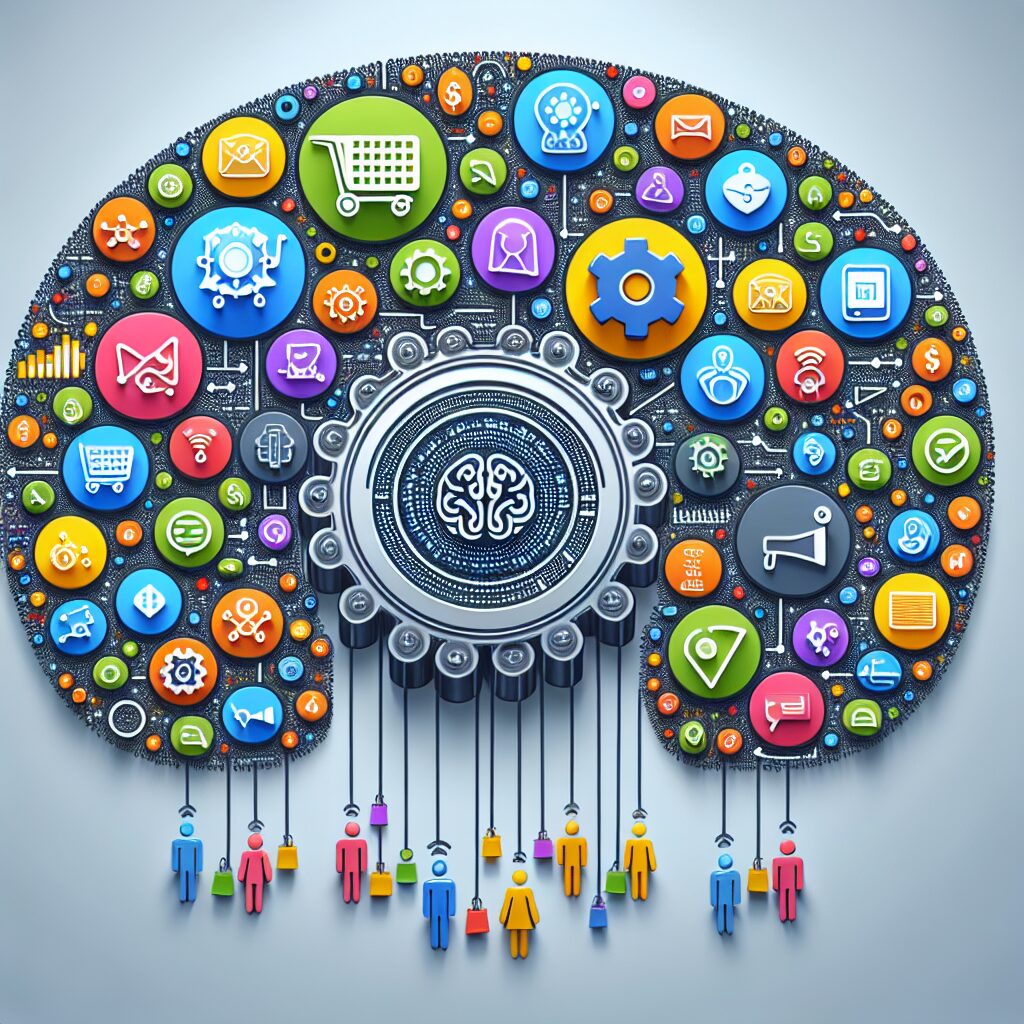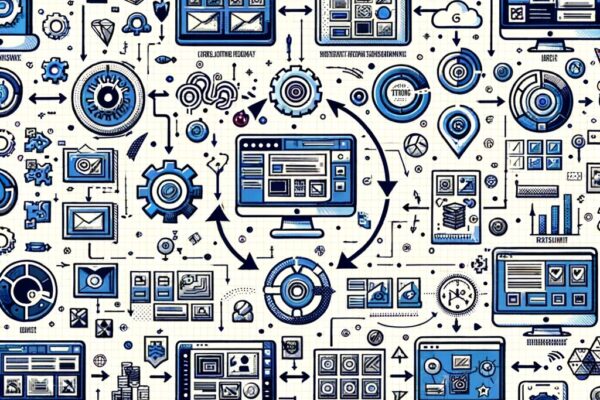
AI for Marketing Automation: Personalizing Customer Experiences and Driving Sales
Marketing automation has moved beyond simple email sequences and social media scheduling. Artificial intelligence (AI) is now the engine driving the next evolution, enabling marketers to deliver hyper-personalized experiences, optimize campaigns in real-time, and ultimately, drive significant sales growth. By leveraging the power of AI, marketing professionals can move from broad-stroke targeting to nuanced understanding of individual customer needs, behaviors, and preferences. This article will delve into the specific ways AI is revolutionizing marketing automation, providing concrete examples of tools and strategies for implementation.
The Power of AI in Personalized Customer Experiences:
At its core, AI thrives on data. In marketing, this translates to collecting and analyzing vast amounts of customer data from various touchpoints, including website interactions, email engagement, purchase history, social media activity, and more. This data is then used to build comprehensive customer profiles, allowing for targeted messaging and personalized experiences.
One of the most impactful applications of AI in personalization is dynamic content optimization. Traditional marketing automation relies on pre-defined segments and static content. AI, however, can dynamically tailor content based on individual user behavior and preferences. For example, an e-commerce website can use AI to recommend products based on browsing history, past purchases, and demographic information. Tools like Optimizely and Dynamic Yield use AI to personalize website content in real-time, showing different headlines, images, and calls to action to different visitors based on their likelihood to convert.
Beyond website personalization, AI is also revolutionizing email marketing. AI-powered email marketing platforms like Phrasee and Persado use natural language processing (NLP) to optimize subject lines, email copy, and calls to action. These tools analyze millions of data points to predict which words and phrases will resonate best with specific audiences, leading to higher open rates, click-through rates, and conversions.
Another crucial area is personalized product recommendations. AI algorithms can analyze past purchase data, browsing behavior, and customer reviews to suggest relevant products to individual customers. This can be implemented on e-commerce websites, in email marketing campaigns, and even within mobile apps. Amazon, for instance, is a prime example of a company that has successfully leveraged AI-powered recommendations to drive sales. Their “Customers who bought this item also bought” feature and personalized product suggestions based on browsing history are highly effective at increasing average order value and customer loyalty.
Optimizing Ad Targeting with AI:
AI algorithms excel at identifying patterns and trends in data that are often invisible to the human eye. This capability is particularly valuable in ad targeting, where AI can be used to identify high-potential customers, optimize ad spend, and improve overall campaign performance.
Predictive Analytics is a cornerstone of AI-powered ad targeting. By analyzing historical campaign data, AI can predict which audiences are most likely to convert, allowing marketers to focus their ad spend on the most promising segments. Tools like Albert AI and DataRobot use machine learning to analyze campaign performance data and automatically adjust ad targeting parameters to optimize for conversions. They can identify optimal audience segments, bidding strategies, and creative variations to maximize ROI.
Lookalike Audiences are another powerful application of AI in ad targeting. These audiences are created by identifying the common characteristics of existing customers and then using AI to find new prospects who share those same characteristics. This allows marketers to expand their reach to new audiences who are likely to be interested in their products or services. Facebook and Google Ads both offer robust lookalike audience features powered by AI.
Furthermore, AI is revolutionizing Real-time Bidding (RTB) in programmatic advertising. AI algorithms can analyze user data in real-time to determine the optimal bid for each individual impression. This allows marketers to target specific users with personalized ads at the exact moment when they are most likely to be receptive to the message. Platforms like MediaMath and The Trade Desk use AI-powered RTB to optimize ad spend and improve campaign performance.
Improving Customer Engagement through Data-Driven Insights:
Beyond personalization and ad targeting, AI is also transforming the way businesses interact with their customers. AI-powered chatbots and virtual assistants are becoming increasingly sophisticated, providing instant customer support, answering questions, and even processing orders.
Chatbots are particularly valuable for handling routine customer inquiries, freeing up human agents to focus on more complex issues. AI-powered chatbots can understand natural language, learn from past interactions, and provide personalized responses to customer queries. Platforms like Drift and Intercom offer chatbot solutions that integrate with various marketing and sales tools, allowing businesses to provide seamless customer support across multiple channels.
AI is also being used to analyze customer sentiment from social media posts, reviews, and other online sources. This information can be used to identify potential problems, address customer concerns, and improve overall customer satisfaction. Tools like Brandwatch and Meltwater use AI to monitor brand mentions, analyze sentiment, and identify emerging trends. This allows businesses to proactively address negative feedback and capitalize on positive sentiment.
Furthermore, AI can be used to predict customer churn. By analyzing customer behavior and engagement metrics, AI algorithms can identify customers who are at risk of leaving. This allows businesses to proactively reach out to these customers with targeted offers and interventions to prevent churn and improve customer retention. Companies like Gainsight provide solutions that leverage AI to predict customer churn and identify opportunities for proactive engagement.
Concrete Examples of AI Tools in Marketing:
- HubSpot: Offers AI-powered features such as predictive lead scoring, content optimization, and personalized email recommendations.
- Salesforce Marketing Cloud: Utilizes AI through its Einstein platform for features like predictive intelligence, personalized journeys, and optimized email send times.
- Adobe Marketing Cloud: Leverages Adobe Sensei, its AI engine, for features like intelligent recommendations, automated audience segmentation, and personalized content delivery.
- Albert AI: An autonomous marketing platform that uses AI to manage and optimize digital marketing campaigns across multiple channels.
- Persado: Uses AI to generate marketing copy that is proven to drive results, including subject lines, email copy, and calls to action.
- Drift: An AI-powered conversational marketing platform that uses chatbots to engage with website visitors and generate leads.
Conclusion:
By embracing AI-powered marketing automation, businesses can deliver more relevant and engaging experiences to their customers, optimize their marketing spend, and ultimately, drive significant sales growth. Marketing managers and professionals who understand and leverage the power of AI will be best positioned to thrive in the increasingly competitive digital landscape. As AI technology continues to evolve, the opportunities for innovation in marketing are limitless, promising a future where every customer interaction is personalized, relevant, and impactful.













































































































































































Recent Comments